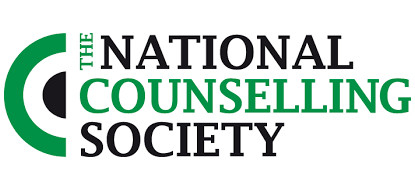Large numbers of people, particularly teens and young adults, have been seeking psychiatric assessments, certain that they are suffering from a mental illness and often quite insistent on obtaining a diagnosis for anxiety, major depression, ADHD, autism spectrum disorder, PTSD, and, perhaps most surprisingly of all, borderline personality disorder. Not that their life stresses aren’t challenging and their distress real, but their difficulties typically fall short of the criteria for diagnosis and seem within the range of normal.
What’s going on?
How did we go from the destigmatization to the desirability of psychiatric diagnoses almost overnight?
Many people, the younger generation in particular, appear to be using the language of mental health and embracing the advice to talk openly about it. Overall this is welcome progress, but today’s youth seem to have replaced the use of words like stress and distress with terms like mental health issue or mental disorder. Maybe mental health education in schools is working better than anyone imagined, or celebrity confessions of struggles are highly influential.
Social contagion also seems to be powerfully at play. A potent and more prevalent factor than generally appreciated, it leads some people beyond merely overestimating and overstating their symptoms. They may develop psychiatric symptoms, or at least symptoms that appear to be psychiatric, through the power of suggestion and overidentification with others who truly display them. When young people with real disorders such as Tourette syndrome post videos of themselves on TikTok and YouTube as self-validating measures, there suddenly materialize in psychiatrists’ offices large numbers of young people with the identical tics.
Paralleling the diagnostic hopefuls crowding doctors’ offices, casual conversationalists outright appropriate psychiatric terminology on the street, flippantly describing ordinary stresses and behavioral quirks: “You’re so OCD.” “I’m so bipolar.” “I’m very ADHD.” “He’s totally on the [autism] spectrum.” While such talk is not necessarily meant to be taken seriously, it nevertheless fuels misunderstanding of the real disorders.
For those who more earnestly self-diagnose, doing so offers them an explanation for their difficulties. It lets a person feel understood. It simplifies complexity, helping make sense of things and bringing a bit of order to the inexplicable and chaotic. It provides validation and legitimacy to one’s struggle, and it might offer justification for one’s shortcomings or behavioral difficulties. It also confers a sense of identity and group-belonging. And it may deliver practical benefits: sick leave, disability benefits, academic accommodations, and insurance coverage for therapy.
It may be instructive to consider the strange desirability of a borderline personality disorder diagnosis. BPD used to be a highly undesirable and stigmatizing label because it indicates a highly dysfunctional, emotionally unstable person. The criteria overlap with other conditions and personality traits so it’s prone to overdiagnosis—especially among those who are self-diagnosing on the internet.
Perhaps part of its sudden unexpected appeal stems from the oversimplified notion that all mental disorders are illnesses, separable from the self—that they are things that happen to the brains of people, perhaps early in development, rather than (as is the case, particularly, for personality disorders) descriptions of who the person is. A diagnosis of BPD connotes someone who has become afflicted with a disorder—a victim—rather than someone who is a very “difficult person” (albeit due to factors partly beyond the individual’s control).
There are costs and risks associated with excessive appropriation of psychiatric terminology, eager self-diagnosis, and overdiagnosis by clinicians who take patients’ exaggerated reports of symptoms at face value: Medications are overprescribed, real mental illnesses become trivialized, psychiatry becomes delegitimized, and the people most in need of psychiatric services face difficulty accessing a system overloaded by unnecessary referrals.
oo, something important is lost in the linguistic inflation—the acceptance of stress and distress as inherent features of life. Perhaps life these days is more stressful than ever for young people—despite all the material advances and conveniences in modern Western societies, and despite living in peacetime. Many face increased expectations, competition, time pressures, choices, information overload, social media, and unprecedented awareness of physically and temporally distant societal thres.
Everyone feels lacking in coping ability and resilience at times. Psychiatric treatment isn’t the answer to that.
Most mental disorders lie at one end of a continuum in relation to normal traits and difficulties (and diagnoses are far less neatly categorical than the DSM-5 would make them appear). There is a wide grey zone in which a diagnosis may or not be applicable. Many people in this grey zone may indeed have significant psychosocial problems and may benefit from professional help. Diagnosis of a disorder doesn’t have to be the only ticket to get through a therapist’s door. If everyone has a mental disorder, then no one does, and the concept of mental illness becomes meaningless.
Read the original article here >>>>>>











